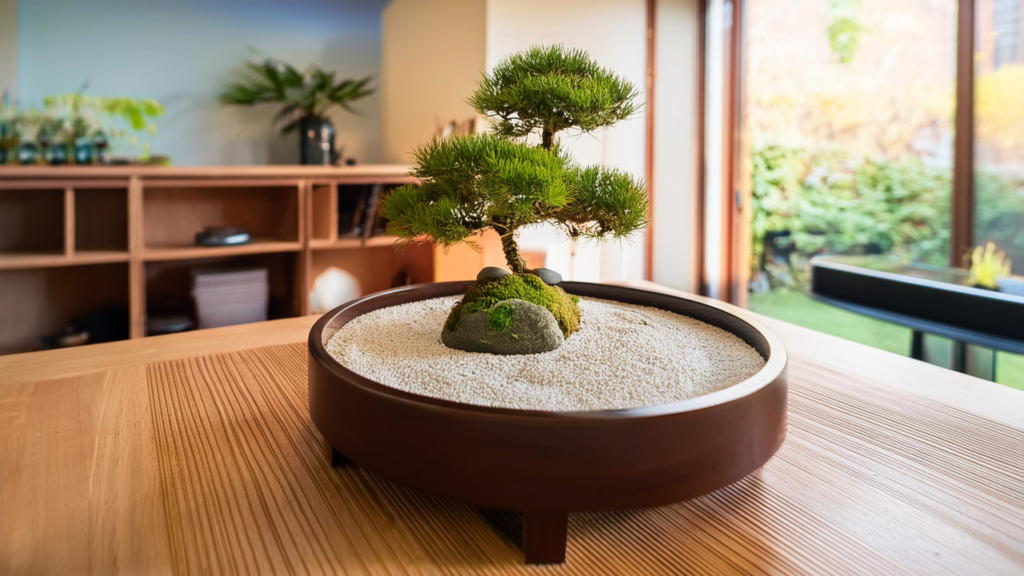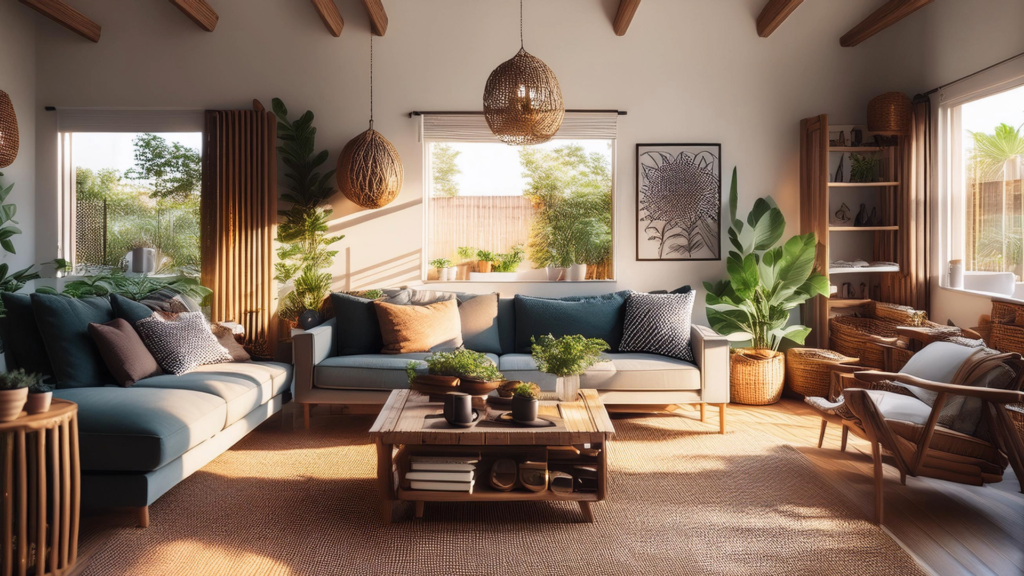Creating a Zen sand garden, also known as a karesansui or dry landscape garden, in your home can be a serene and meditative addition. Including anti-stress home features purposefully increases a sense of calmness in your home everyday.

Here’s a step-by-step guide to help you set up a small or large zen garden anti-stress home feature:
Materials Needed:
1. Space, Container, or Tray:
– Choose a shallow contained space or tray to hold the sand. It can be made of wood, metal, or ceramic, and should be large enough to create a meaningful design but small enough to fit in your desired space.
2. Sand:
– Fine white sand is traditionally used. You can also use colored sand if you prefer a different aesthetic. Be creative, be yourself!
3. Rake:
– A small rake, often with fine teeth, is used to create patterns in the sand. You can buy one or make your own using wood. For small gardens you can repurpose a comb.
4. Stones and Rocks:
– Smooth, rounded stones and rocks of various sizes can be used to represent mountains, islands, or other natural elements.
5. Additional Elements:
– You might include small statues, plants (like bonsai or small succulents), or other decorative items to personalize your garden. Include figures that energize you and bring you peace.

Steps to Create Your Zen Sand Garden
1. Choose a Location:
– Select a quiet, peaceful spot in your home where the garden can remain undisturbed. This could be on a tabletop, a windowsill, or a dedicated corner.
2. Prepare the Container:
– Ensure the container is clean and place it in the chosen location. If it’s lightweight, you may want to secure it to prevent accidental tipping.
3. Add the Sand:
– Pour the sand into the container to a depth of about 1-2 inches. Spread it evenly across the bottom.
4. Arrange the Stones:
– Place stones and rocks in the sand, thinking about the natural landscapes they represent. Group them in odd numbers, as this is aesthetically pleasing and mimics nature.
5. Create Patterns:
– Use the rake to draw patterns in the sand around the stones. Common designs include straight lines, ripples, and concentric circles, which symbolize water, waves, and the flow of nature.
6. Incorporate Additional Elements:
– If desired, add small plants, statues, or other decorative items. Be mindful of the overall harmony and balance of the garden.

Tips for Maintaining Your Zen Sand Garden:
1. Regular Raking:
– Regularly rake the sand to refresh the patterns and maintain the garden’s meditative quality.
2. Cleaning:
– Periodically clean the container and stones to keep the garden looking neat. Remove any debris or dust from the sand.
3. Mindfulness:
– Use the garden as a tool for mindfulness and relaxation. Spend a few moments each day arranging the sand and stones, focusing on the present moment.
Creating and maintaining a Zen sand garden as an anti stress home feature can be a calming and rewarding practice, bringing a touch of tranquility to your home.

Small Zen gardens as anti-stress home features provide a tranquil interactive retreat, fostering mindfulness and focus in compact spaces. Larger Zen gardens offer expansive areas for deep immersive reflection and connection with nature.
A large garden will require specialized construction plans, while a small garden has few requirements. Both sizes promote relaxation, stress relief, and balance, allowing individuals to cultivate inner peace and clarity regardless of space constraints.
